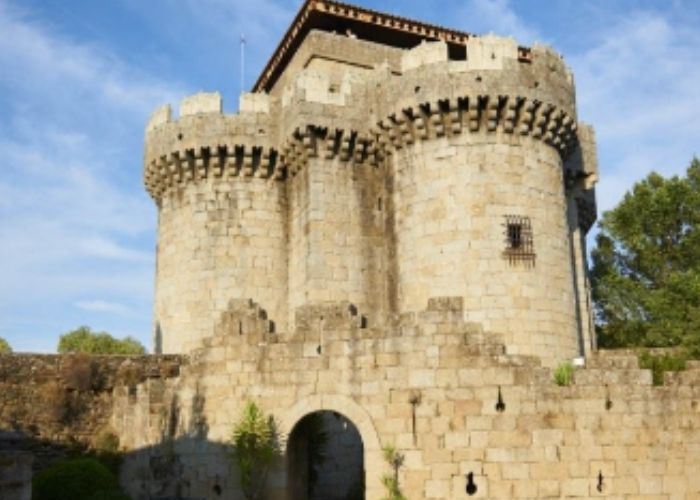PROVINCIA DE CáCERES – In Spain, you can visit a medieval fortified town that has been completely abandoned due to a mistake. In the 1960s the inhabitants had to leave their homes because the Spanish government under Franco wanted to flood the village for a new reservoir.
In those times, this was the fate of so many other villages in the country. However, what distinguishes Granadilla in the province of Caceres from the others is that the water did not come here in the end. Yet it is still a ghost town. A ghost town that you can visit. And that is certainly interesting. You can wander through empty rooms and walk through the walled streets of the town and visit the castle. Only you will not find a lively village square where you can have a drink.
Well-preserved city walls
Granadilla was founded by the Moors in the 9th century and is strategically located on the ancient Ruta de la Plata trade route. The fortress walls are still intact. This makes the town the third city in Spain with the best-preserved city walls after Ávila and Lugo. This makes a visit now well worth it.
End of village life
However, Franco ended all living in the village. At the time, Spain embarked on a huge project to build dams for water supply and to stimulate the economy during the period when the country was completely cut off from the outside world by the dictatorship.
Granadilla was located in the floodplains of the Alagón River, where the Gabriel y Galán reservoir should be located. Therefore, the 1,000 inhabitants had to pack their things between 1959 and 1969. Many moved to new settlements near the village.
From the moment the water started to rise due to the construction of the dam, it covered all but one of the routes to the village, turning it into a peninsula. However, the city itself did not flood. Despite this, the residents were not allowed to return.

Traumatic
As happened in all villages that had to give way to the water of the many reservoirs that Spain now has, this experience was traumatic for the population. Many are still frustrated. It was known from the start that the city was higher than the dam so that the water would not reach Granadilla. In times of dictatorship, however, no one had rights.
Yet many residents continued to fight for their return after Franco’s death when Spain returned to democracy. According to residents quoted by the BBC, no Spanish government has listened to them. The government is still enforcing the flood decree signed by Franco. Therefore, villagers cannot reclaim their homes.
However, they can visit their city. In addition, Granadilla was chosen as a Historic-Artistic Site in 1980 and now functions as a free open-air museum. Residents and their children still meet twice a year in the city. On All Saints’ Day (November 1) and the Assumption Day on August 15.
What to visit in the ghost town of Granadilla?
The town still contains interesting heritage. The first thing you notice is the geographical location in the middle of a peninsula and the fact that the town is still completely walled. It is even the third best-walled city in Spain, after Ávila and Lugo. The wall was built by Almohaden and has only one entrance.
A must see in Granadilla is the Torre Castillo. It was probably built in the 15th century by the first Grand Duke of Alba. The shape is not common. A semicircular tower is attached to the central square tower, creating a unique fortress. The castle tower has four floors. Upstairs is the armoury.
Another attraction is the Iglesia de la Asunción. This was recently restored. Other emblematic buildings are the bakery, school, barracks house, rectory and bar Angelito.
Educational function
Thousands of students and educators have already participated in agriculture, ecology, beekeeping, and carpentry workshops and courses through the Abandoned Cities Restoration and Educational Use Program. In this way, young people come into contact with the sustainable processes that were followed before the industrial era. In addition, in each workshop, they learn about the environment, urban restoration and about the importance of living together.
Since no one lives there anymore, visiting hours apply to the city. In this way, visitors are monitored and the city is prevented from deteriorating due to vandalism or abuse by visitors. Until October, Granadilla is free to visit from 10 am to 1.30 pm and from 4 to 8 pm. After that, winter opening times apply until March from 10.00 am to 1.30 pm and from 4.00 pm to 6.00 pm.
Also read: What happened to this ghost train station in Spain


